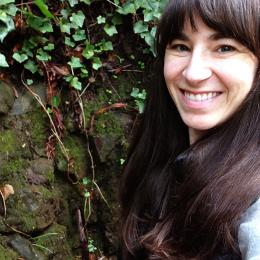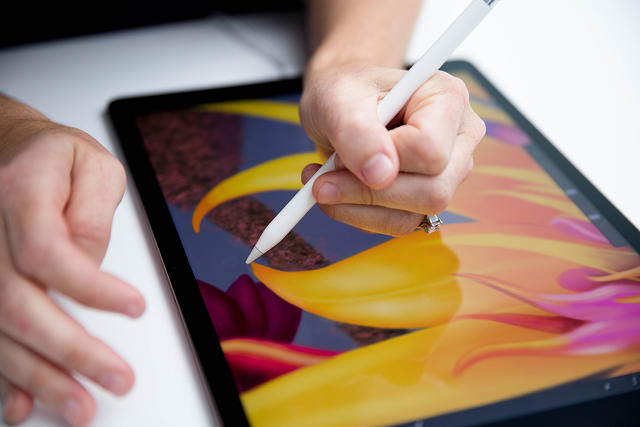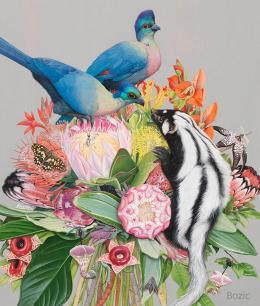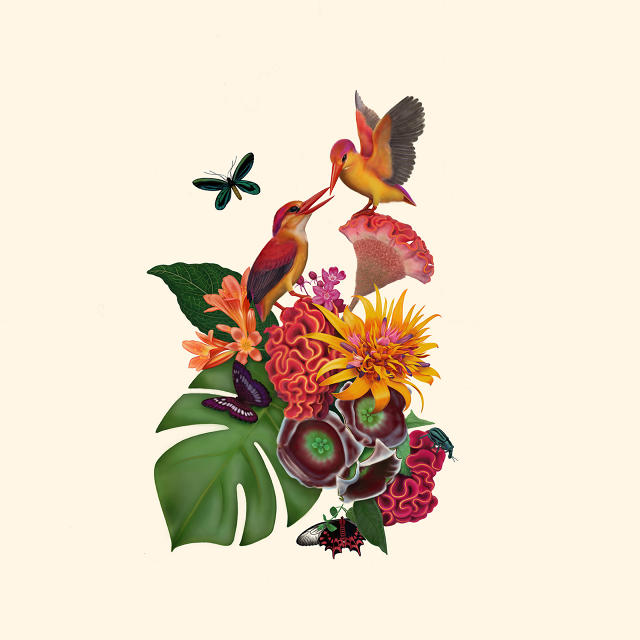How One Very Traditional Painter Created Her First iPad Pro Art
Tiffany Bozic was perfectly happy applying acrylic paint to maple panels. Then Apple called.
For years, San Francisco-based artist Tiffany Bozic wasn’t the least bit tempted to try her hand at creating imagery on an iPad.
“My bread and butter is making paintings that sell in galleries,” she explains. “I’ve had tight deadlines for over a decade.” Her physical artwork—highly detailed paintings inspired by nature themes, but often with a dash of surrealism—was so in demand that she didn’t see herself as having the time to go digital.

In fact, other than dabbling in Photoshop, she didn’t find much use for computers as part of her artistic process at all. “I was a complete iPad virgin,” she says.
Then Apple asked Bozic to try using an iPad Pro and Pencil stylus as part of its “Start Something New” campaign, which aims to inspire consumers to use iPads, iPhones, and Macs for self-expression. The company has made this push before, but this latest phase is the first time it’s come back to the theme since the announcement of the iPad Pro, which, with its large screen, potent graphics, and pressure-sensitive Pencil, emphasizes creativity to a degree that’s unusual even for an Apple product.
Bozic is one of 11 artists whose works will be displayed in Apple Stores and on Apple.com, and the only one whose project was done entirely on an iPad Pro. (Apple will also be hosting hands-on creativity workshops in its stores, including one about producing art on an iPad.)

Even when it was Apple itself suggesting that Bozic might find value in the iPad Pro, the idea wasn’t automatically appealing to her. “It was a very foreign project for me,” she says. “When they approached me, I was a little overwhelmed.” Now, having tried it for herself, she uses words like “fun,” “liberating,” and “amazing” to describe the experience.

From Paintbrush to (Simulated) Airbrush
For her real-world artwork, Bozic works with acrylic paints and often applies them to a panel of maple wood instead of canvas. Instead of trying to precisely simulate this process on the iPad Pro to get a similar end result, she decided to try for a unique feel with her iPad painting, which depicts birds, butterflies, and flora of Papua New Guinea.
“I almost wanted it to be luminescent, like coral reef,” she says. “I wanted it to glow.”
Bozic worked in Procreate, an iPad app with an array of highly customizable painting implements. Rather than choosing one of its simulated conventional paintbrushes, she ended up using its airbrush tool, which produced the radiant effect she desired.
Her finished work does a better job of conveying the results that are possible with Procreate, an iPad Pro, and a Pencil than I could ever do with mere words:

For Bozic, one of the primary advantages of creating digital art—the ability to erase anything you don’t like—was especially resonant, because her standard technique is uncommonly unforgiving. “I use watered down acrylic paint—it’s absorbed immediately into the wood,” she says. “There are no mistakes. Or I have to build them into the process and make them look like I did it on purpose. With the iPad, I could immediately delete.”
As for the Pencil, “it didn’t distract me by being clumsy or off-balanced,” Bozic says. “In fact, I was impressed with how well it responded to my varying pressure and speed.”
In the end, she was able to produce her iPad Pro painting in about half the time it might have taken if she’d tackled the same subject with brushes, acrylics, and maple. “I work so slowly, but now that I’ve learned how to make an illustration in Procreate on the iPad, it just seems so easy.”
With art lovers snapping up Bozic’s paintings as quickly as she can create them, she still has no incentive to make a radical, permanent departure from the traditional tools she’s mastered. But she told me that she plans to buy an iPad Pro and continue her foray into digital art—and for someone who started out so iPad-adverse, that’s a testament in itself. “I’m saving my pennies,” she says.
[Illustrations: Tiffany Bozic, courtesy of Apple]
Fast Company , Read Full Story
(157)














